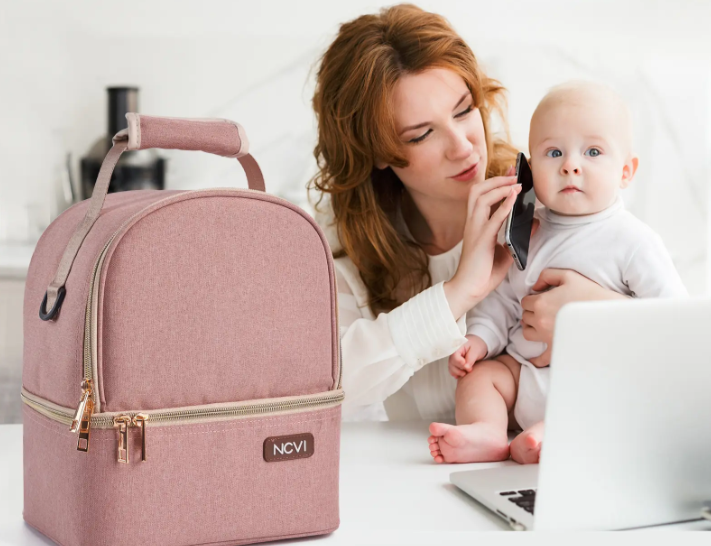Language


Pumping breast milk is a labor of love, but once the milk is expressed, keeping it safe during transport becomes the next priority. Whether you're commuting to work, running errands, or traveling, an insulated cooler bag is an invaluable tool for preserving your "liquid gold.” Below, we break down the latest medical guidance, best practices, and pro tips to ensure every drop stays fresh for your baby.
According to the Centers for Disease Control and Prevention (CDC), freshly expressed breast milk can be stored and transported in an insulated cooler bag with frozen ice packs for up to 24 hours . This guideline is echoed by leading health authorities worldwide, including the Mayo Clinic, the UK's National Health Service (NHS), and Malaysia's Gleneagles Hospital.
• A fully frozen ice pack maintains a temperature range that slows bacterial growth.
• Beyond 24 hours, ice packs begin to thaw, and the internal temperature of the cooler can rise above the safe zone (below 4 °C / 39 °F).
• Opt for a high-quality insulated cooler with thick walls and a tight-sealing zipper.
• Make sure it fits your daily output—some bags hold two bottles, others up to six.
• Place ice packs on all sides of the milk containers to create an even cold zone.
• If your journey is longer than a few hours, add extra ice packs or swap them out en route .
• Store milk in BPA-free hard plastic or glass containers, or in breast-milk-specific storage bags.
• Keep containers sealed and upright to prevent leaks.
• Position them in the center of the cooler, surrounded by ice packs, rather than against the walls.
Once you reach your destination:
• Immediately place the milk in a refrigerator (≤ 4 °C / 39 °F) if you plan to use it within four days.
• If you won't use it within four days, transfer it to a freezer (≤ –18 °C / 0 °F) for long-term storage—up to 6 months in a standard freezer or 12 months in a deep freezer.
• Label each container with the date and time of expression to ensure proper rotation.
• Keep the cooler bag out of direct sunlight and away from heat sources.
• Limit how often you open the bag; every unzip lets warm air in.
• For flights, review airline policies—most carriers allow breast milk in carry-on bags with ice packs.
• If your office has a refrigerator, you can store milk there during the day and place it in your cooler bag only for the commute home.
• If no fridge is available, the 24-hour cooler rule still applies.
• If you start with frozen milk and ice crystals are still present when you arrive, you may refreeze it.
• If the milk has fully thawed but is still cold, use it within 24 hours and never refreeze.
• Smell: Spoiled milk often has a sour or rancid odor.
• Taste: A small sip (by an adult) can confirm spoilage—if in doubt, discard it.
• Appearance: Separation is normal; clumps or a strange color are not.
• Pack in small quantities (2–4 oz / 60–120 ml) to reduce waste .
• Keep a backup ice pack in your freezer for unexpected delays.
• Use a digital thermometer strip to monitor the cooler's internal temperature if you're traveling long distances.
✓ Insulated cooler bag with tight seal
✓ Fully frozen ice packs (at least two)
✓ BPA-free, airtight containers or breast milk storage bags
✓ Labels with date and time
✓ Plan to refrigerate or freeze within 24 hours
An insulated cooler bag is a game-changer for pumping moms, but it only works when used correctly. Follow the 24-hour guideline, pack strategically, and transfer milk to a fridge or freezer as soon as possible. By mastering these simple steps, you can ensure your baby receives all the nutritional benefits of fresh breast milk—no matter where your day takes you.
Email cannot be empty
Password cannot be empty
Email format error
Email cannot be empty
Email already exists
6-20 characters(letters plus numbers only)
The password is inconsistent
Email format error
Email cannot be empty
Email does not exist
6-20 characters(letters plus numbers only)
The password is inconsistent